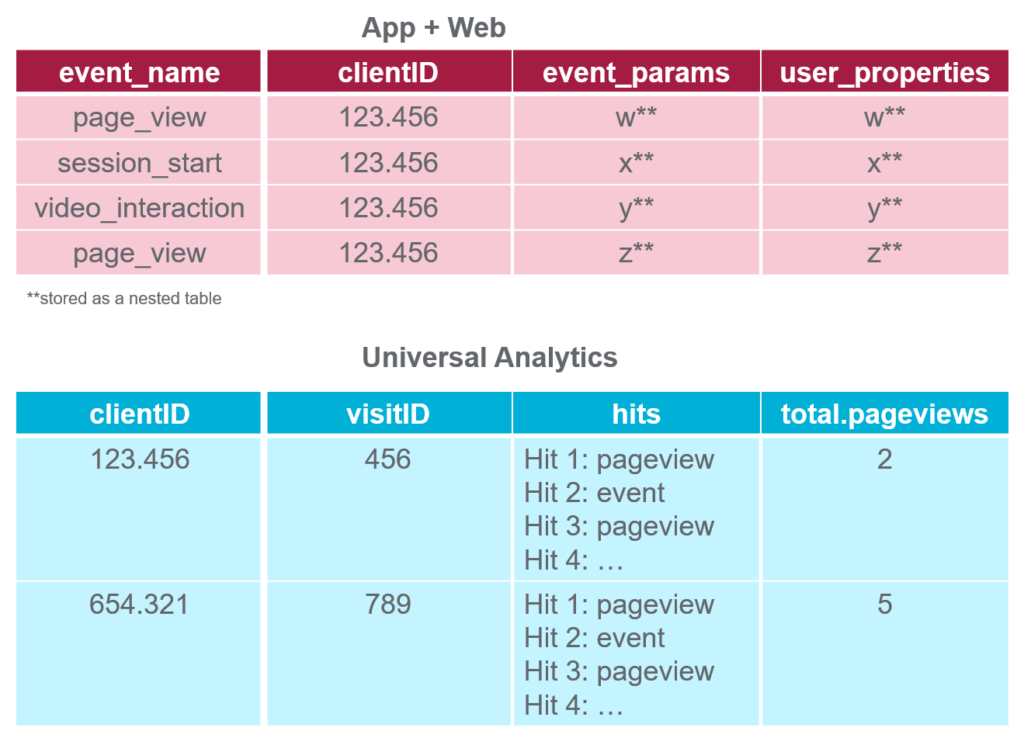- Services
- Growth Strategy
- Customer Insights
- Performance Marketing
- Global Reach
- Resources
- About
- Careers
- Contact
- 0113 212 1211
- Get in touch
The year-round incessant pace required to manage day to day digital marketing can be all-consuming, leaving little time for marketers to step back and effectively prioritise for the long term.
With uncertainty around when the coronavirus pandemic will end, and many verticals seeing a drop in sessions and conversions as a result, you may find that your marketing budget has been paused or pulled.
This difficult period can be an opportunity to dedicate time and resource to ‘getting your house in order’ by implementing effective and thorough tracking and measurement, which will set your business up to be successful in the future.
Use this time to scope out and implement the new App + Web analytics property. It is a completely new Google platform which is built for the way information is consumed online today. While it is still in beta mode, we expect this version of analytics to eventually become the leading measurement tool going forwards.

Some key elements that make App + Web properties so invaluable include:
While App + Web is not currently at a level where you would use it as your primary analytics tool, it already has some excellent features, many of which are unavailable in standard Google Analytics (GA) and some which are not available in Analytics 360.
One of the most exciting features of App + Web is the advanced analysis section, as it offers an excellent workspace within the user interface to perform all sorts of in-depth analysis on the fly.
Funnels, segment overlap, path analysis (forward and reverse) and cohort analyses are all available for free in the tool, with pathing and cohorts only available in App + Web.
While we don’t expect the platform to reach its full potential for another 12 – 18 months, we strongly advise businesses to set up App + Web as early as possible (alongside your existing analytics implementation). This is especially important if you have an app, but still important for websites without an app or even a plan to create an app. App + Web only tracks and stores data once the platform is set up, so implementing it sooner rather than later ensures you can migrate to App + Web once it is more sophisticated and have data to compare with year on year from the get-go, rather than having to wait an additional 13 months.
Using any time freed up during the pandemic to implement App + Web will give you access to more data in the future so you can make better-informed decisions.
With many verticals experiencing a drop in conversions it’s difficult to show value in the traffic that you’re still receiving, paying more attention to user behaviour can help highlight success during the pandemic. Identifying what site interactions high-value users took before purchasing, pre-coronavirus, can help you to understand how many site visitors are in this research part of the customer journey during this period.
Defining and tracking engagements can also highlight the value of upper funnel activities – data which can be used to inform your wider digital strategy. Use this time to ensure you have identified all site engagements which relate to your business goals and are successfully tracking these behaviours will help build a bigger picture of what activity is working and what isn’t, both during the pandemic and in the future.
We have an in-depth post on how to identify and measure relevant engagements, along with a free Data Studio dashboard to help you track engagement, here.
 Track more and get to know your users better
Track more and get to know your users better
It’s extremely important to question if you are tracking everything you could be tracking. What interactions from a customer (online or offline) would help you understand more about them and therefore market to them better?
Event tracking, data import and measurement protocol allow us to track and measure interactions from our users that are not tracked if you’re using an ‘out of the box’ implementation of GA. Form interactions, offline events, customer persona segments can all be tracked in GA – enriching our view of customers and their journeys.
By tracking more data, you are able to measure, segment and compare better – ultimately helping to inform your marketing strategy. Measure more, learn more, do more.
Demand is down for many industries right now, but this won’t always be the case and businesses need to be prepared to go live with paid activity again, the minute consumer demand begins to increase. Have a strategy in place for when this happens – what will your messaging be? Where will your budget be most effective?
Once you have a plan in place, you need to know when you can execute this plan at the earliest opportunity. The best way to understand this is to use Google Search Console data to monitor your industry and identify when it starts to pick up. It’s difficult to spot when the trend is starting to change on a daily level when you have day to day fluctuations.
To help, we have built a Data Studio dashboard that helps you understand when the demand in your market starts to increase again. The dashboard takes the ‘average daily number of impressions’ of the last three days and comparing it to the last ten and twenty-one days, so you can identify when search volumes start to recover.
Implementing your post-pandemic paid advertising at the earliest opportunity possible will allow you to capture conversions before your competitors do, giving you an invaluable head start on the game.
You will need to connect the Google Data Studio dashboard template to your own Search Console data source so you can understand when things are starting to improve in your industry.
There is no denying that the COVID-19 crisis can be a difficult time for businesses. Using any downtime during this period can help to futureproof your digital strategy so that when the market bounces back, so do you.